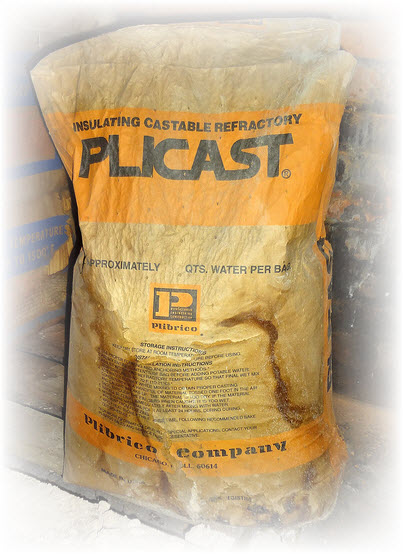If the Instructions Are Right on the Bag, Can Anyone Install Refractory?
 Some people think refractories are a commodity. Why do you need an expert installer when the mixing instructions are stamped right on the bag? After all “mud is mud” right? Wrong!
Some people think refractories are a commodity. Why do you need an expert installer when the mixing instructions are stamped right on the bag? After all “mud is mud” right? Wrong!
It’s a common assumption, and we field a lot of calls from folks who used to think that way. Here are the typical questions we hear:
- Why didn’t my castable set up?
- My material set up, but crumbled when the forms were removed. What happened?
- My material isn’t strong enough, but the data sheet claimed it should work?
Typically, after performing our inspection, we often find:
- too much water was added during mixing
- the material was not properly vibrated
- the material was vibrated too much
- the wrong type mixer was used
- the forms were removed too soon.
The list goes on.
They followed the instructions on the bag … but the instructions weren’t enough.
Penny Wise but Pound Foolish
Many purchasing agents are focusing on keeping costs down. Nothing wrong with that, but they often use low-cost labor with little to no training to handle the installation. And they end up paying MORE when something does go wrong, because the job has to be done again. Not to mention the unplanned “downtime” which is never factored into the cost.
We’ve handled more of these calls than I can ever remember, our advice is simple: Pick a well-trained and experienced installation company from the start. There is nothing “simple” about a material that is expected to work under extreme conditions.
The Nuances of Our Craft
Material manufacturers list the recommended installation procedures (water content, mixing time, setting times, etc.) on the bag based on their best estimates from testing in their labs under ideal conditions. But often the lab cannot reproduce the exact environmental and mechanical elements that exist in the field. That’s why the instructions on the bag are often simply guidelines or a range of suggested values.
Sometimes the guidelines work, and other times they don’t — not because they are wrong, but because of factors unique to a particular job. You simply cannot place someone at a refractory mixer, give them a measuring cup and a watch, and turn them loose to mix and install refractory. There’s a bit of art to our craft.
A well-trained refractory installer must know the basics, but must also know when and how to make changes during installation. When castable refractory is being installed you may commonly hear a trained installer communicating with his “mixing man.” You may even hear phrases such as,
Tighten it up!
Loosen it up!
Hold!
You may even see hand signals being used such as the opening and closing of his fist. Other times you might see him snapping his fingers.
This “chatter” and “sign language” during installation from an experienced team is critical. The installer is telling his “mixing man” he needs to tighten up his castable (less water) or loosen it (more water).
Why vary the water content? Maybe it’s raining outside or the humidity is high so the material actually needs less water. Or, it could be just the opposite – extremely hot outside and inside the plant. This type of environment may require more water (within the stated range) for the proper refractory consistency and properties. Or maybe the cast area is thinner and longer behind a form, which requires a slightly wetter material. The list can go on and on.
Building the Foundation
The team at F.S. Sperry believes refractory basics are critical to master. That’s why our personnel (no matter what their position) periodically review our “basic training.” This allows each employee to see how properly installed material looks and what happens when it’s installed wrong or in different ways. We mix and cast panels of castables — one by the book, one too wet, one over-vibrated, etc., to see the results.
We focus on the fundamentals just like a football team focuses on blocking and tackling at the beginning of training camp. We continue training our supervisors and foreman on how to take the proper action based on the different scenarios that arise in the field.
It’s this kind of training and preparation that makes your project successful.
Comments are closed.

